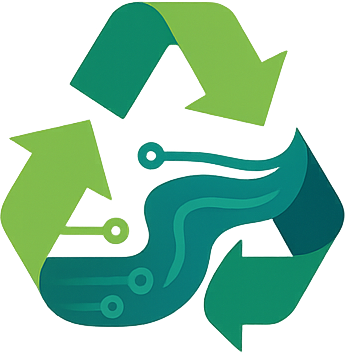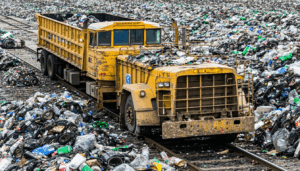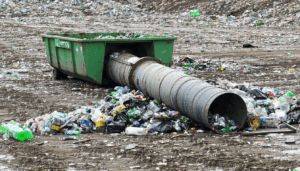In an era dominated by technology, the challenge of electronic waste, or e-waste, has become a pressing environmental issue across the United States. With millions of devices discarded annually, improper disposal poses risks to both public health and the environment. This article explores the latest developments in e-waste management, highlights accessible disposal options for Americans searching for “e-waste disposal near me,” and examines the broader implications of this growing crisis. From new regulations to innovative recycling programs, here’s what you need to know about responsibly managing e-waste in 2023.
The Rising Tide of E-Waste in the United States
The U.S. generates approximately 6.9 million metric tons of e-waste each year, according to a 2022 report by the Environmental Protection Agency (EPA). This includes discarded smartphones, laptops, televisions, and other electronic devices that often contain hazardous materials like lead, mercury, and cadmium. Only about 15-20% of this waste is recycled properly, leaving a significant portion to end up in landfills or be exported to developing countries.
The rapid pace of technological advancement fuels this problem. As consumers upgrade devices more frequently, the volume of obsolete electronics continues to grow. This trend underscores the urgent need for effective disposal and recycling solutions tailored to local communities.
Navigating E-Waste Disposal Near Me: Options and Challenges
For Americans seeking “e-waste disposal near me,” finding reliable options can be daunting. Many municipalities offer drop-off locations or periodic collection events, but availability varies widely by state and city. Major retailers like Best Buy and Staples also provide free recycling programs for certain electronics, while organizations such as Goodwill accept donations of working devices.
However, challenges persist. Accessibility remains an issue in rural areas where collection centers are scarce. Additionally, not all facilities handle every type of e-waste, and some charge fees for specific items like old CRT monitors. To address these gaps, several states have enacted laws mandating manufacturer take-back programs, with California and New York leading the way.
Legislative Updates and Industry Initiatives
Recent legislative efforts aim to streamline e-waste management nationwide. In 2023, bills introduced in Congress propose federal standards for e-waste recycling, inspired by successful state-level policies. These measures could compel manufacturers to fund recycling programs, reducing the burden on consumers and local governments.
Industry leaders are also stepping up. According to Sarah Johnson, an environmental policy analyst at GreenTech Solutions, “Tech companies are increasingly adopting circular economy models, designing products for easier recycling and offering trade-in programs.” Apple, for instance, reported recycling over 40 million devices globally in 2022 through its initiatives.
Environmental and Social Impacts of E-Waste
Improper e-waste disposal has far-reaching consequences. Toxic substances from electronics can leach into soil and water, posing health risks to communities near landfills. Moreover, exporting e-waste to poorer nations often results in unsafe dismantling practices that harm workers and pollute local ecosystems.
On the flip side, proper recycling offers significant benefits. It conserves valuable resources like gold, copper, and rare earth metals found in electronics. The EPA estimates that recycling one million laptops saves energy equivalent to powering 3,500 homes for a year. These advantages highlight why accessible disposal options are critical for sustainable progress.
Future Outlook: Innovations and Public Awareness
Looking ahead, innovations in e-waste management hold promise. Startups are developing advanced recycling technologies to extract materials more efficiently, while apps and online tools help users locate nearby disposal sites with ease. Public awareness campaigns are also gaining traction, educating consumers on the importance of responsible recycling.
Yet, experts caution that systemic change requires collaboration between policymakers, businesses, and individuals. Balancing convenience with environmental responsibility will be key to tackling this issue in the long term.
Conclusion
As e-waste continues to pile up across the United States, finding “e-waste disposal near me” is more important than ever. With millions of tons generated annually, the environmental and health risks of improper disposal cannot be ignored. From legislative reforms to industry-led initiatives, efforts are underway to address this crisis, but public participation remains essential. By leveraging local resources and supporting sustainable practices, Americans can play a vital role in reducing e-waste’s impact. The path forward lies in collective action and innovation to ensure a cleaner, safer future.
Frequently Asked Questions (FAQs)
1. What is considered e-waste?
E-waste includes discarded electronic devices such as smartphones, computers, televisions, printers, and batteries that are no longer in use.
2. How can I find e-waste disposal near me?
Check with local government websites for drop-off locations or collection events. Retailers like Best Buy or online tools like Earth911 can also help locate nearby facilities.
3. Is there a cost to recycle e-waste?
Some recycling centers or programs offer free services, while others may charge fees for specific items like old monitors or large appliances.
4. Why is proper e-waste disposal important?
Proper disposal prevents toxic materials from harming the environment and human health while conserving valuable resources through recycling.
5. Are there laws regulating e-waste in the US?
Yes, several states have laws requiring manufacturers to fund recycling programs. Federal legislation is also being considered to standardize e-waste management nationwide.





